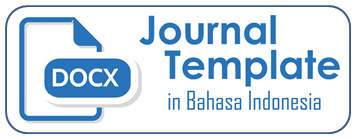Intervensi Spiritual pada Pasien dengan Penyakit Tidak Menular (PTM)
DOI:
https://doi.org/10.32524/jksp.v8i2.1486Keywords:
Spiritual Intervention, Non-Communicable Disease, Spiritual Well-BeingAbstract
health problems, individuals have the potential to experience stress and anxiety. The need for coping mechanisms for stress and anxiety often leads to spiritual activities. Low-income countries such as Indonesia have a high religious status, making religious leaders a trusted intermediary who can encourage the general public to live a healthy life. The aim of this literature review is to explore the effectiveness of several spiritual interventions based on approach, duration, and outcomes across different cultural and religious backgrounds and provide an overview of the role of spirituality in patients with NCDs. The method used was narrative review obtained from PubMed, ScienceDirect, Scopus, MEDLINE. 8 suitable articles were obtained from 4,467 articles. With a total 1.178 respondents from various background, indicates that spirituality does note have to be associated with religious beliefs. The result of this literature review is the need to integrate spiritual interventions as they can increase patient motivation in dealing with their illness. Spiritual interventions should be tailored to the goals to be achieved and the religious background for the intervention to be effective. It was found that spiritual interventions can improve perception of illness, quality of life, spiritual wellbeing, hope in cancer patients, self-dignity, blood sugar control, spiritual wellbeing, and there was a reduction in anxiety, depression and psychological distress. It was summarised from the 8 articles the advantages and disadvantages of each tailored intervention and that some interventions required specialised skills to implement. Practical implications for professionals are provided at the end of this literature review.
Downloads
Published
How to Cite
Issue
Section
License
Copyright (c) 2025 Jurnal Kesehatan Saelmakers PERDANA (JKSP)

This work is licensed under a Creative Commons Attribution-ShareAlike 4.0 International License.













